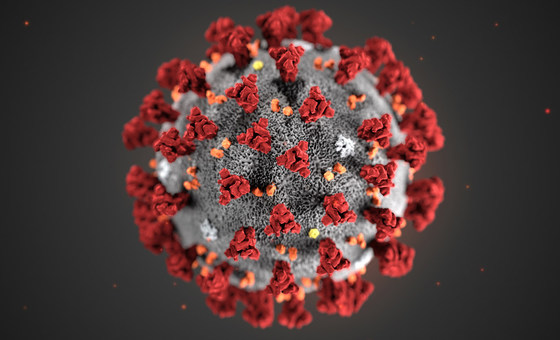Demystifying Viruses: Understanding The Intricacies Of These Microscopic Menaces
8 min read
Unseen and mysterious, viruses have a way of capturing our attention and instilling fear in our hearts. From common colds to more severe illnesses like COVID-19, these microscopic menaces have the power to disrupt our lives on a global scale. But what exactly are viruses? How do they spread? And most importantly, how can we protect ourselves from their relentless grip?
In this blog post, we will demystify the world of viruses and delve into the intricacies of these invisible foes. Get ready to uncover their secrets as we explore different types of viruses, how they are transmitted, symptoms to watch out for, preventive measures for your workplace, effective treatments for viral infections, and so much more.
So grab your virtual microscope and join us on this fascinating journey as we shed light on the captivating world of viruses!
What are viruses?
Viruses – the enigmatic entities that have perplexed scientists and sparked curiosity for centuries. But what exactly are these microscopic organisms? Unlike bacteria or fungi, viruses straddle the line between living and non-living entities. They consist of genetic material wrapped in a protein coat, lacking any cellular structure or ability to replicate on their own.
Viruses are incredibly diverse, with countless types existing in our world. Each virus has its own unique characteristics and targets specific hosts – ranging from humans to plants to animals. Some well-known examples include the common cold, influenza, HIV/AIDS, and coronavirus.
The mode of transmission for viruses varies depending on the type. In most cases, viruses spread through direct contact with infected individuals or surfaces contaminated by bodily fluids. Others can be transmitted through respiratory droplets expelled during coughing or sneezing.
Once inside a host’s body, viruses hijack healthy cells and use them as factories to reproduce themselves rapidly. This leads to the manifestation of symptoms associated with viral infections such as fever, fatigue, sore throat, coughing, body aches – each symptom varying depending on the type of virus infecting an individual.
Understanding what viruses are is crucial in preventing their spread and minimizing their impact on our lives. By learning about their intricate nature and how they operate within our bodies, we can equip ourselves with the knowledge necessary for effective prevention strategies and informed decision-making when it comes to treatment options.
So next time you hear about a new outbreak or experience flu-like symptoms yourself,
remember that behind those invisible assailants lies an entire realm waiting to be decoded – one where scientific research seeks answers while humanity remains resilient against these relentless foes.
Types of viruses
Types of Viruses
Viruses come in a wide variety, each with its own unique characteristics and ways of infecting living organisms. Understanding the different types of viruses can help us better comprehend the complexities of these microscopic menaces.
One common type is the influenza virus, which causes seasonal flu outbreaks worldwide. It spreads through respiratory droplets and can lead to symptoms such as fever, coughing, and body aches.
Another well-known virus is the herpes simplex virus (HSV), which causes cold sores or genital herpes. This highly contagious virus can be transmitted through direct contact with an infected person’s skin or bodily fluids.
The human immunodeficiency virus (HIV) is perhaps one of the most notorious viruses known to mankind. It attacks the immune system and weakens it over time, leading to acquired immunodeficiency syndrome (AIDS).
Other types include adenoviruses that cause respiratory illnesses like bronchitis; norovirus responsible for stomach flu outbreaks; and hepatitis viruses that target the liver.
Each type has its own unique set of symptoms and modes of transmission, making it critical to understand how they spread to prevent further infections. Stay informed about these various viral strains so you can take appropriate precautions to protect yourself and others from their harmful effects.
How viruses are transmitted
How Viruses are Transmitted
Understanding how viruses are transmitted is crucial in preventing the spread of these microscopic menaces. Viruses can be transmitted through various means, and being aware of these modes of transmission can help us take necessary precautions to protect ourselves and others.
One common way that viruses are transmitted is through direct contact with an infected person. This can occur when we shake hands, hug, or touch surfaces that have been contaminated by the virus. In addition to direct contact, respiratory droplets expelled when an infected person coughs or sneezes can also carry viruses and infect others nearby.
Furthermore, viruses can also be transmitted indirectly through contaminated objects or surfaces. When we come into contact with such objects, like doorknobs or shared utensils, and then touch our faces without washing our hands first, we risk introducing the virus into our system.
Another mode of transmission for some viruses is through vectors such as mosquitoes or ticks. These insects become carriers of the virus after biting an infected individual and can then transmit it to other people they bite.
It’s important to note that each type of virus has its own specific methods of transmission. For instance, respiratory viruses like influenza primarily spread through respiratory droplets from coughing or sneezing. On the other hand, gastrointestinal viruses like norovirus commonly spread via contaminated food or water.
To prevent viral transmission effectively, practicing good hygiene habits becomes paramount. Regularly washing hands with soap and water for at least 20 seconds helps eliminate any potential viral particles on our skin. Avoiding close contact with those who are sick and wearing masks in crowded areas further reduces the risk of exposure.
In conclusion,
Understanding how viruses are transmitted empowers us to take necessary precautions against their spread.
By being aware of different modes of transmission – whether it’s direct contact, respiratory droplets,
indirect contact via contaminated surfaces or objects,
or even vector-borne routes –
we can actively protect ourselves and others.
Remember, prevention is key in the battle against
What are the symptoms of a virus infection?
What are the symptoms of a virus infection?
When it comes to viral infections, the symptoms can vary depending on the specific virus involved. However, there are some common signs that may indicate a viral infection is at play.
One of the most prevalent symptoms is fever. When your body detects an invading virus, it raises its internal temperature in an attempt to kill off the intruder. This rise in body temperature often leads to chills and sweating as well.
Another telltale sign of a viral infection is fatigue. Viruses take a toll on our immune system, leaving us feeling tired and rundown. This can make even simple tasks feel exhausting.
Respiratory viruses often come with coughing and sneezing as they target our respiratory system. These symptoms can be accompanied by a sore throat and congestion.
Gastrointestinal viruses typically cause stomach pain, nausea, vomiting, and diarrhea. These unpleasant symptoms can leave you feeling weak and dehydrated.
Other less specific symptoms include muscle aches, headaches, and swollen lymph nodes.
Remember that these are just general guidelines; each virus behaves differently within the body. If you suspect you have been infected with a virus or if your symptoms worsen or persist for an extended period of time, it’s essential to seek medical attention for proper diagnosis and treatment options available from healthcare professionals
How to prevent viruses from spreading in your workplace
Preventing the spread of viruses in the workplace is crucial for maintaining a healthy and productive environment. Here are some practical steps you can take to minimize the risk:
1. Encourage regular handwashing: One of the simplest yet most effective ways to prevent virus transmission is by promoting good hand hygiene. Provide easy access to hand sanitizers or soap and water, and educate employees on proper handwashing techniques.
2. Implement respiratory etiquette: Remind employees to cover their mouths and noses when coughing or sneezing, preferably with a tissue or their elbow. This helps prevent respiratory droplets from spreading through the air.
3. Maintain cleanliness: Regularly clean high-touch surfaces like doorknobs, light switches, keyboards, and phones using disinfectants that are effective against viruses.
4. Promote social distancing: Arrange workstations so that employees can maintain a safe distance from each other whenever possible. Consider implementing staggered schedules or remote work options to reduce overcrowding in shared spaces.
5. Encourage sick leave policies: It’s important for employees to feel comfortable staying home when they’re unwell without fear of repercussions. Encourage individuals who exhibit symptoms of illness to stay home until they are fully recovered.
By following these preventive measures consistently, you can significantly reduce the risk of viral infections spreading within your workplace community!
How to treat a viral infection
When it comes to treating a viral infection, there are several steps you can take to help your body fight off the invading virus and alleviate the symptoms. First and foremost, rest is key. Your body needs time to recover and heal, so make sure to get plenty of sleep and avoid overexertion.
Staying hydrated is also incredibly important. Drinking lots of fluids helps flush out toxins from your system and keeps your body functioning optimally. Warm liquids like herbal teas or broths can provide soothing relief for a sore throat or congestion.
Over-the-counter medications such as pain relievers or fever reducers can help manage symptoms like headache, muscle aches, and fever. However, it’s crucial to follow the recommended dosage instructions and consult with a healthcare professional if you have any underlying conditions or are taking other medications.
In some cases, antiviral medications may be prescribed by a doctor to specifically target certain types of viruses. These medications work by inhibiting the replication of the virus in your body.
Additionally, practicing good hygiene habits such as regularly washing your hands with soap and water can help prevent the further spread of the virus. Avoid close contact with others while you’re contagious to reduce the risk of transmission.
Remember that each individual’s response to treatment may vary depending on factors such as overall health, age, and severity of the infection. It’s always wise to seek medical advice if you have concerns about treating a viral infection properly.
Conclusion
Conclusion
Understanding the intricacies of viruses is crucial in order to protect ourselves and prevent their spread. Viruses are microscopic menaces that can cause a range of illnesses, from common colds to more severe infections like COVID-19.
We have explored what viruses are, the different types that exist, how they are transmitted, and the symptoms they can cause. By knowing this information, we can take proactive steps to minimize their impact on our lives.
Preventing the spread of viruses in our workplaces is essential for maintaining a healthy environment. Implementing proper hygiene practices such as regular handwashing, sanitizing surfaces, and promoting vaccination can significantly reduce the risk of viral infections spreading among employees.
In cases where viral infections do occur, it’s important to seek medical attention and follow appropriate treatment protocols. Resting, staying hydrated, and taking prescribed medications or antiviral drugs can help alleviate symptoms and speed up recovery.
While we cannot completely eradicate viruses from existence, by staying informed about them and practicing good hygiene habits both at home and in public spaces like workplaces, we can greatly reduce their impact on our health.
So let’s continue to educate ourselves about these microscopic menaces while also being vigilant in implementing preventive measures. Together we can create healthier environments for everyone!
Remember: Stay safe! Stay healthy!






